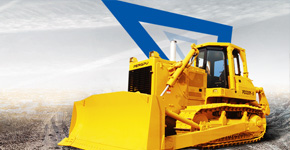Emergency response to mining accidents
Key points for handling poisoning and suffocation accidents
(1) Before entering the dangerous area, rescuers must wear protective equipment such as Gas mask and self rescuers, and check their air tightness to avoid poisoning and suffocation accidents of rescuers, which may cause more casualties.
(2) Move the poisoned person to a well ventilated and fresh place, lie still and keep warm, and assess their breathing and heartbeat status. If the poisoned person's breathing is not stopped or if their heart is still beating despite breathing, they should immediately loosen their clothing buttons and belts, remove debris from the poisoned person's mouth and nose, keep the respiratory tract unobstructed, and undergo artificial respiration immediately. If the heart stops beating, it is necessary to quickly perform chest compressions and massage, as well as artificial respiration rescue, and send it to the hospital as soon as possible.
(3) For those with mild poisoning or mucosal damage who can cooperate, it is necessary to mobilize the patient to rinse with water or physiological saline in a timely manner. After taking about 500ml orally, stimulate the throat to vomit, and repeat this process repeatedly.
(4) During rescue, emergency personnel must remain calm and move quickly. On the way to the hospital, make the poisoned person lie flat, maintain smooth breathing, and continue to implement artificial first aid< Br/>
nine hundred
Key points for handling permeable accidents
(1) It is necessary to quickly identify the location and nature of the water inrush, estimate the amount of water inrush, static water level, water inflow after the inrush, impact range, supply source, and affected surface water bodies.
(2) Based on the location before the accident and the possible situations encountered during evacuation, determine the location of the personnel in distress, analyze the location and other places with survival conditions, determine the spatial volume, oxygen, etc. of the location, and calculate the time they can survive.
(3) Organize drainage according to the amount of accumulated water and water inflow, while blocking the ground supply water source, controlling the water potential, and preventing the expansion of the flooded area of the well.
(4) Strengthen drainage and ventilation during rescue, monitor the concentration of harmful gases, cut off the power supply in the disaster area, and prevent the sudden emission of other toxic gases.
(5) During reconnaissance and rescue after drainage, it is necessary to prevent roof falling, bottom falling, and secondary water inrush.
(6) When dealing with a flood accident, the rescuers entered the tunnel in the opposite direction of the water flow for reconnaissance.
(7) When transporting and rescuing people in distress, it is necessary to prevent sudden changes in the environment and living conditions that the injured have adapted to, resulting in unnecessary casualties< Br/>
nine hundred and one
Key points for handling roof falling and falling accidents
(1) Firstly, reinforce the supports at both ends of the roof falling area to prevent the expansion of the roof falling range. A dedicated person should observe the changes in the roof and if there is a warning of another roof falling, first strengthen the support and prepare for a safe retreat.
(2) Based on the actual situation, identify the range of roof fall and the location and number of people in distress, maintain contact with them, and encourage them to cooperate in rescue efforts. When rescuing a person in distress, the rescuer should first contact them by shouting, tapping, or using a ground sound detector to determine the location and number of people in distress.
(3) If the location of the person in distress has poor ventilation, efforts must be made to strengthen ventilation. Methods such as using compressed air pipes, water pipes, digging tunnels, and drilling holes should be used to deliver fresh air, beverages, and food to the person in distress.
(







 Industry Trends
Industry Trends
